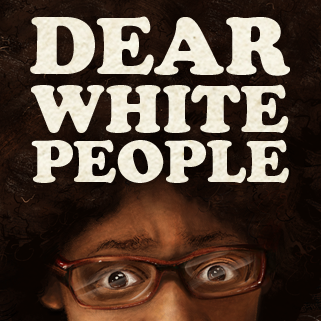Racism is not dead. It is alive and thriving on the fear and judgments of the ignorant.
Writer and Director James Simien attempts to expose the realities of racism in society today in his film, “Dear White People.” The film follows the lives of four students at Winchester University, an Ivy League university.
The students are each dedicated to a different form of media, including: films, blogs, magazines and newspapers.
Each individual strives to succeed in each of their concentrations, while also staying true to their perspective social morals.
Tessa Thompson leads this epic cast as the token social activist, Samantha White. Whilst struggling to identify her personal identity as a biracial, Sam hosts a web video series titled, “Dear White People.”
In her effort to combat issues of racism within her residential halls and throughout the rest of campus, she uses her show as a way to bring to light issues of race around the school.
Although she proceeds with her rambling often in a sarcastic tone, Sam combats real issues with real knowledge.
She utilizes her knowledge of history and pop culture to remind audiences that racism is present in multiple situations in multiple communities.
The film focuses on the varying degrees of acceptance, first within the black community and secondly on the nation-wide university system.
Within the residence hall, traditionally an exclusive black-only dormitory, the film delivers insight into the varying degrees of what it means to be black.
For example, Lionel Higgins (Tyler James Williams), a freshman at Winchester and a self-proclaimed fan of Mumford & Sons, sits in the middle of two races.
He finds himself uninterested with members of the Black Student Union and equally unaccepted by his Caucasian peers.
Troy Fairbanks (Brandon P. Bell) finds himself stuck on impressing his demeaning white colleagues while also appeasing to his groups of black friends. Colandrea Conners, better known as “Coco,” is, as many would guess it, stuck between impressing her white colleagues and simultaneously struggling to fit in with her own race.
Each student experiences the struggle of trying to find their place in a white-dominated society while also holding true to their personal identities. These students are neither accepted by their black communities nor their white counterparts.
The film continues with a glimpse at shocking and accepted representations of racism today.
With the yearly Halloween party being thrown by a particularly narrow-minded group of white male students, audiences might have assumed that it would be something particularly racist.
However popular it might be to paint white faces with brown paint, sport toy guns and rubber Obama masks, then run around with gold chains to the sound of rap music, the truth is these offensive and disturbing costumes are actually an accepted form of partying.
And it doesn’t stop at offending the black community. Other themes like “Colonial Bros and Nava-Hos” and “Geishas and Gentlemen” use stereotypes and generalizations to represent races that are probably not too keen on the costume choices.
“Dear White People” challenges viewers to take another look at society claiming a utopian state, free of racism and prejudice.
The truth lies in the way individuals continue to accept racist demonstrations without an empathetic thought as to how affected groups might feel.
Simien and his team challenge audiences to address the issues of racism and breakdown the fear of the unknown.





![[Both photos courtesy of sonoma.edu]
Ming-Ting Mike Lee stepped in as the new SSU president following Sakakis resignation in July 2022](https://sonomastatestar.com/wp-content/uploads/2024/04/CC4520AB-22A7-41B2-9F6F-2A2D5F76A28C-1200x1200.jpeg)



























